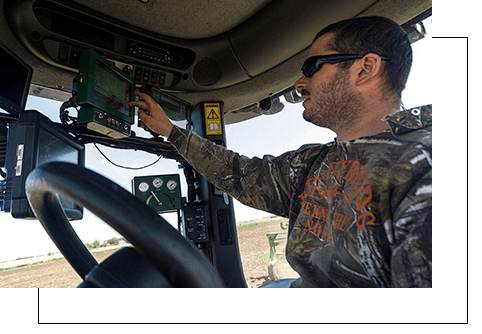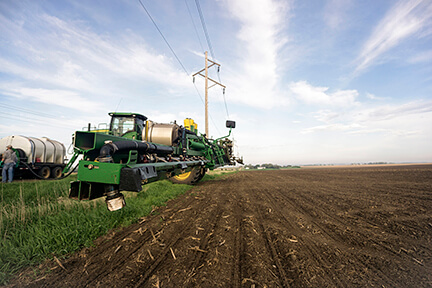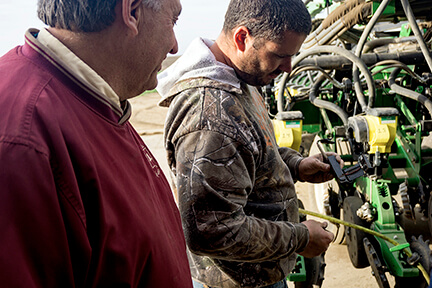Some of the decisions they make are based on experience and tradition. Deciding when to plant, for example, involves keeping a close eye on the weather among other things, but the Bones family has learned over the years that there’s no replacement for simply walking the fields to determine if they’re ready. Excessive moisture is not good, because the tractor can get stuck. In addition to making sure the ground can withstand the weight (compacted soil hinders seed development), another key concern is making sure the seed delivery and nutrient applicator attachments on the planter aren’t clogged with mud.





